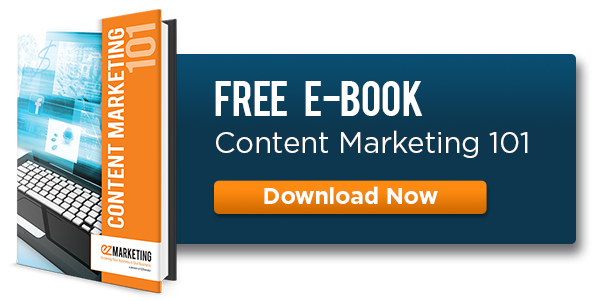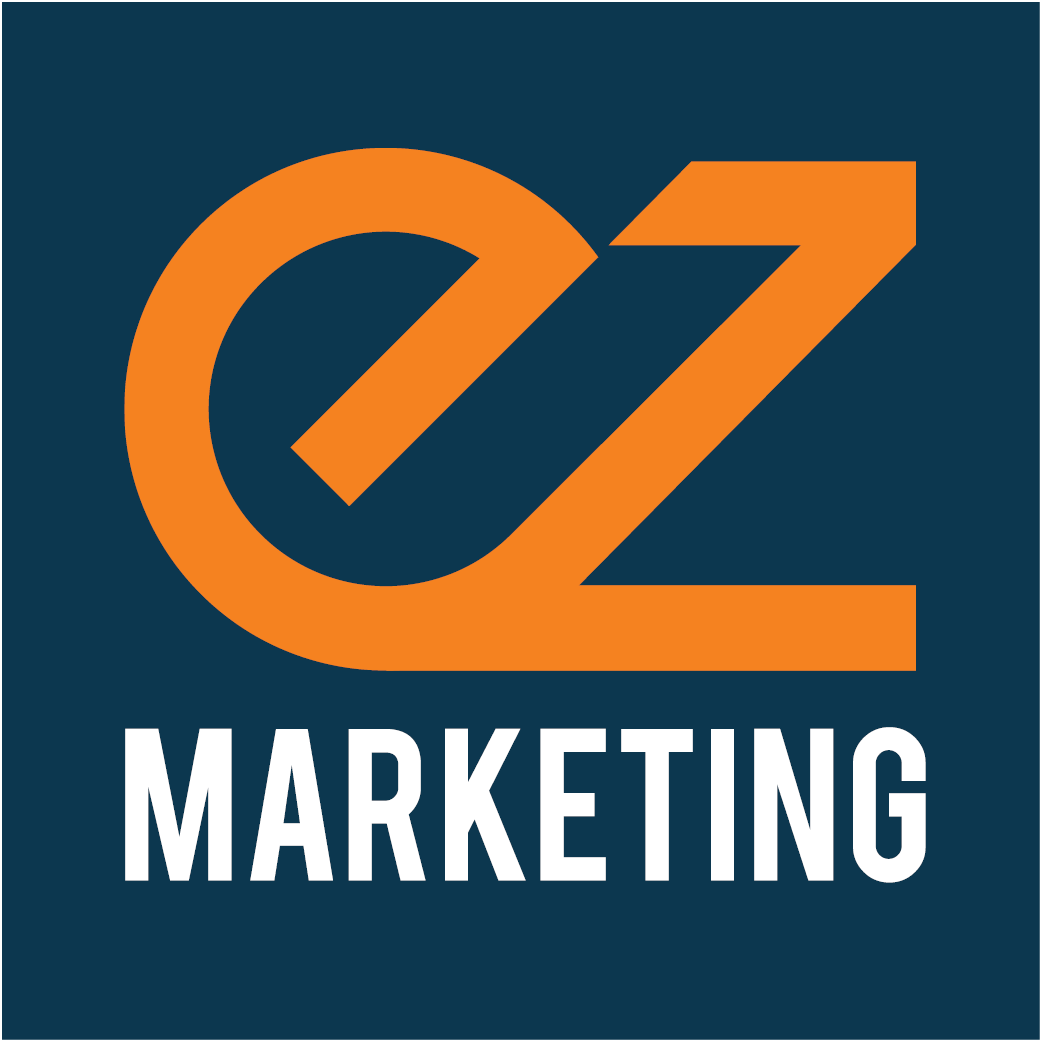Harland David failed at everything he ever attempted.
- He failed at school.
- He failed as a fireman.
- He failed as a lawyer.
- He failed at selling life insurance.
- He failed at selling tires.
- He failed at manufacturing.
- He was fired from a dozen jobs.
At age 65, he was left with only a modest savings and $105 a month from Social Security.
But that was the year that he stopped failing. At 65 he began franchising businesses using a special recipe he'd created, and by 73 years old he was able to sell that business for today's equivalent of $15 million.
$15 million for Harland David Sanders. You know him as Colonel Sanders. His famous recipe, Kentucky Fried Chicken, made him a legend.
We all love stories
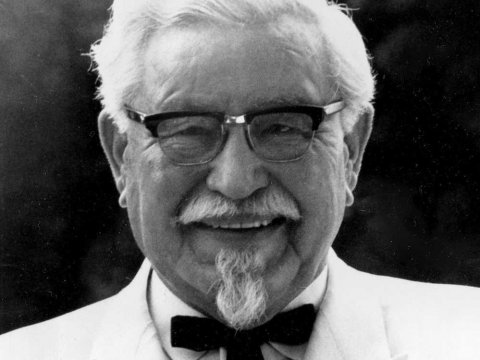
Our love for stories isn't merely anecdotal, it's a scientific fact. Neurobiologists have concluded that when a story captures our imagination, we become invested in it. We feel along with it. This can be explained by a chemical within our brains called oxytocin, which is typically produced when we experience kindness. One of the biggest things that oxytocin synthesis does is to enhance empathy. In other words, oxytocin allows us to relate with one another, to truly feel each other's emotions.
Here's the kicker: the right type of storytelling produces oxytocin.
"Storytelling" doesn't just extend to what we think of as, well, telling stories. Because human beings seem to have a biological need for storytelling, a narrative is subliminally assigned to anything we consider meaningful. In The New Yorker, Adam Gopnik writes,
"Everything—faith, science, love—needs a story for people to find it plausible. No story, no sale.
His wording is important:"No story, no sale." As a marketing agency, one of the things we're charged to do is to generate revenue and a return on investment for our clients. The word sale is often the operative, and utilizing the power of storytelling is one of the single best ways that businesses can connect with their target customers and generate leads, conversions, and ultimately sales.
But when storytelling is utilized masterfully it does something even more important - it creates the type of emotional investment in a brand that keeps customers coming back more and more, becoming brand evangelists in the process.
What is a brand story?
Since storytelling is so incredibly powerful, it's time to talk about how it relates to your brand. Once upon a time in the world of marketing, a brand's story was viewed simply as the timeline of how the business started, how it grew, and how it could help a particular audience. Because we understand storytelling as a science today better than ever, the definition of the term "brand story" has changed, if it can even be neatly defined at all.
What makes the term difficult to define is that everyone has a slightly different take on brand story today. Perhaps it's most important that a brand's story be shared between the business and its target market. Maybe the key to a compelling brand story is keeping it short and sweet. As Ann Handley, Chief Marketing Officer of MarketingProfs, wrote in an Entrepreneur article on the art of telling your brand's story,
Let's talk about that word story. It's one I find impossibly squishy in a business context. For me, it can conjure up performance art more than industry.
She goes on to explain that a great brand story allows you to meaningfully connect with your audience, helping them "to view your business as what it is: a living, breathing entity run by real people offering real value."
The conclusion she draws is spot-on. It's clear what a brand story should do. Yet, if even the basic definition of the term "brand story" seems up for grabs, where do we start?
Let's begin with what we know for sure.
What a brand story is not
- Your "About Us" Page. We're not suggesting that your website not have an "About Us" page. However, your brand's story isn't simply about the year you were founded, the owners over the years, and the fact that you're still in business.
- All About You. As a matter of fact, nothing your business does should be! In focusing on yourself, you're alienating your potential customer - not welcoming them to engage with you.
- A Sales Pitch. Your brand story isn't an attempt to peddle your business's products or services. Remember, stories connect people, and if your story feels pitchy, you will only come across as inauthentic.
- Static. Has your story ended yet? (If you're still in business, the answer is "of course not!") Your story will continue to be written as your company grows, and everything gets included - the good, the bad, and the ugly.
What a brand story is
- Emotional. According to an article in Psychology Today, consumers primarily use emotions such as personal feelings and experiences rather than information, and that the emotion has a far greater influence on a consumer than an ad's content.
- All About the Target Customer. Who is a story for - the author or the reader? While it benefits both, a story is delivered (by a
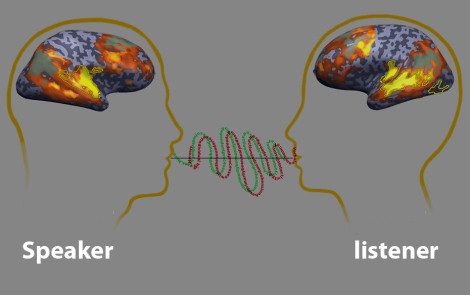 teller) for the instruction, interest, and profit of its recipient (the captive audience).
teller) for the instruction, interest, and profit of its recipient (the captive audience). - Interactive. Back to the science. The result of a compelling story is called neural coupling, an experience in which the brain of the listener is synchronized with that of the teller, to the effect that their brains mirror one another.
- Character-Driven. Remember oxytocin? It turns out that oxytocin synthesis occurs consistently when listeners are engaged with character-driven stories. Colonel Sanders isn't the whole KFC story - but he's a huge part of it.
Bernadette Jiwa, who literally "wrote the book" on brand story, sums up what one is in her book The Fortune Cookie Principle:
Your story isn’t just what you tell people. It’s what they believe about you based on the signals your brand sends. The story is a complete picture made up of facts, feelings, and interpretations, which means that part of your story isn’t even told by you.
Creating your brand story
Everything above might sound really scary. "Part of my story isn't told by me? Then what's the point of a brand story?"
Don't worry - you do have the opportunity to craft the narrative, and to employ your story to the world in everything you create. We'll talk about the latter in a moment, but first, let's talk narrative.
It turns out there's some pretty strong evidence that a particular type of narrative is the most effective in terms of neural coupling, which gets a listener (your brand's audience) to engage with a teller (your brand). You might even remember it from your middle school language arts class when you learned all about plot. The plot of a story goes in this order:
Exposition > Rising Action > Climax > Falling Action > Denouement (Resolution)
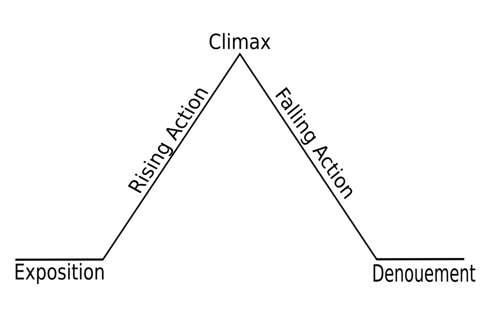
This is known in the literary world as Freytag's Pyramid, and although it seems simple, Freytag's manner of storytelling is extremely powerful. Paul Zak, the nation's leading authority on storytelling and how it affects our brains, explains that there seems to be a "universal story structure" human beings are hard-wired to connect with.
One of the most common storytelling structures that follows Freytag's Pyramid is called the Monomyth, or The Hero's Journey. It's pretty simple. A hero leaves the comfort of home to embark on a quest, and meets some helpers along the way. But then he faces a series of troubles that lead up to a huge conflict. The hero emerges victorious and transformed, returning home with the power to help others using the tools he gained along the way.
Sound familiar? It should. It's the story of Harry Potter, Luke Skywalker, Jesus Christ, Frodo Baggins, and Martin Luther King, Jr. As it turns out, this is the basic narrative structure for more than half of the Hollywood movies (and books of both fiction and nonfiction) that come out every year.
Think in terms of your own journey, wherein you're the hero. How would you craft that narrative?
Here are some questions you can ask as you begin to put your own brand story together, armed with Freytag's Pyramid and The Hero's Journey. The first steps may begin with the founder of the company, but remember, this isn't only about the Colonel. It's about the whole brand.
- Where is the comfy place you (the brand) were before you embarked on the big, scary quest?
- What motivated you to leave that comfy place?
- Why were you uniquely qualified to embark on such a journey?
- What characters helped out along the way?
- When did you pass from familiar territory into the unknown? How did you recognize that?
- How did you address challenges along the way?
- When did the earth-shattering conflict occur? How did you respond?
- How did overcoming that challenge change your narrative or course?
- What skills, tools, or knowledge did you return with to help others (your customers and prospects)?
As you consider these questions, keep in mind that you're not simply putting together a bulleted list. You're writing a story. Stories have to be interesting and moving. A great method of crafting your story in a way that will drive engagement is to remember the acronym TRUTH.
- Topical. Is your story being told so that it meets the target customer at the right time? As we often say here, "Marketing is a matter of telling the right message to the right people at the right time."
- Relevant. You know who your target customer is. (At least you should!) Are you developing a story that will resonate with him or her?
- Unusual. Your business should have a unique selling proposition that describes why, of all the choices your prospect has, they should choose you. Work your USP into your story, and don't be afraid to throw surprises in there.
- Trouble. Remember that climax, that point of conflict. Leave your target audience wondering, "How the heck did they overcome that / solve that challenge?"
- Human. It's critical that your story connects with people. Customers are able to interact with brands in a more personal way that ever before. When you tell your story, make sure it's human-centric, authentic, warm, empathetic.
As the acronym suggests, your story can't be a lie. Tell it in a colorful way, but don't take artistic license with it. Authenticity is key.
Content marketing: Your story in action

We come to the million-dollar question: How do I tell my brand story? Everyone in marketing seems to be talking about brand story these days, but how is question that often seems unanswered in a simple way. As Handley said, the term is "squishy." If it's not your "About Us" page, if it's not your elevator pitch, if it's not your USP or core essence or value proposition - if in short it's not about you - then how do you even tell it?
The not-so-secret is, your brand story should shape all of the above, and elements of your brand story should be clear in each one. But your business's journey, your very own Hero's Journey, is so much more than any of the above.
[Tweet "In today's marketing world, brand story doesn't exist without content marketing."]
Internally, you and everyone in your business should know the Hero's Journey - the version of the story you want to tell. But that story is communicated to your target audience, prospects, and clients through everything that you say and create as a company.
The valuable content that you make, which you can learn about more in our content marketing eBook, is what defines, refines, enhances, and over time, grows the narrative that we call a brand story.
Neil Patel, one of the world's foremost marketing geniuses and someone we've recently suggested every marketer follow closely, put it this way in a brilliant Forbes article:
It comes down to having a content strategy. You can only tell your story by publishing content. We’re now in the realm of content marketing, but with a spin — we’re doing content marketing with the strategy of a storyteller.
Think of your brand story as the narrative (the one you developed) that, as Patel suggests, is communicated to your audience by the intricate tapestry of everything that you create. Social media, blog posts, YouTube videos, eBooks, case studies, and the myriad other content marketing tactics you employ are woven together to demonstrate who you are as a business and what your brand represents.
The best part is that it's still being written, and if you're conscious about how your brand story is emotionally relevant to your target audience, every new chapter strengthens it. When you decide to define the narrative within your business and then employ it strategically across everything you make, your brand can only benefit.
Everything you create is telling part of a story - a boring one or an amazing one, a story that engages or repels, a story that creates brand loyalty or sends potential customers looking for another story. A better story. A story they can relate to.
What kind of story are you telling?
Have questions about the story you're trying to tell? Let us know! We'd love to give you our input. Our marketing agency in nearby Lancaster, PA is hear to help!
